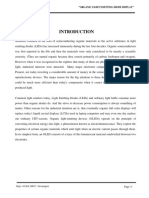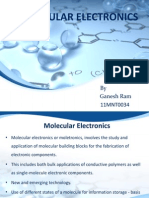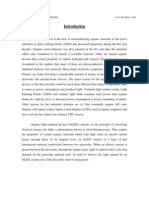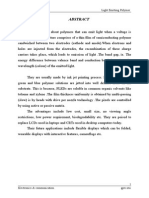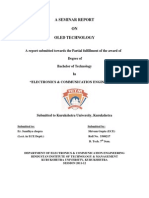0% found this document useful (0 votes)
12 views12 pagesDisplay System Cse Stream
The document provides an overview of display systems and memory devices, detailing the properties and applications of various materials such as organic and polymer electronic memory devices, OLEDs, QLEDs, and liquid crystals. It discusses the significance of photoactive and electroactive materials in optoelectronic devices, as well as the historical development of liquid crystals and their classifications. Additionally, it highlights the unique properties of perovskite materials and their potential applications in optoelectronic devices.
Uploaded by
Nehasree RCopyright
© © All Rights Reserved
We take content rights seriously. If you suspect this is your content, claim it here.
Available Formats
Download as PDF, TXT or read online on Scribd
0% found this document useful (0 votes)
12 views12 pagesDisplay System Cse Stream
The document provides an overview of display systems and memory devices, detailing the properties and applications of various materials such as organic and polymer electronic memory devices, OLEDs, QLEDs, and liquid crystals. It discusses the significance of photoactive and electroactive materials in optoelectronic devices, as well as the historical development of liquid crystals and their classifications. Additionally, it highlights the unique properties of perovskite materials and their potential applications in optoelectronic devices.
Uploaded by
Nehasree RCopyright
© © All Rights Reserved
We take content rights seriously. If you suspect this is your content, claim it here.
Available Formats
Download as PDF, TXT or read online on Scribd
/ 12














